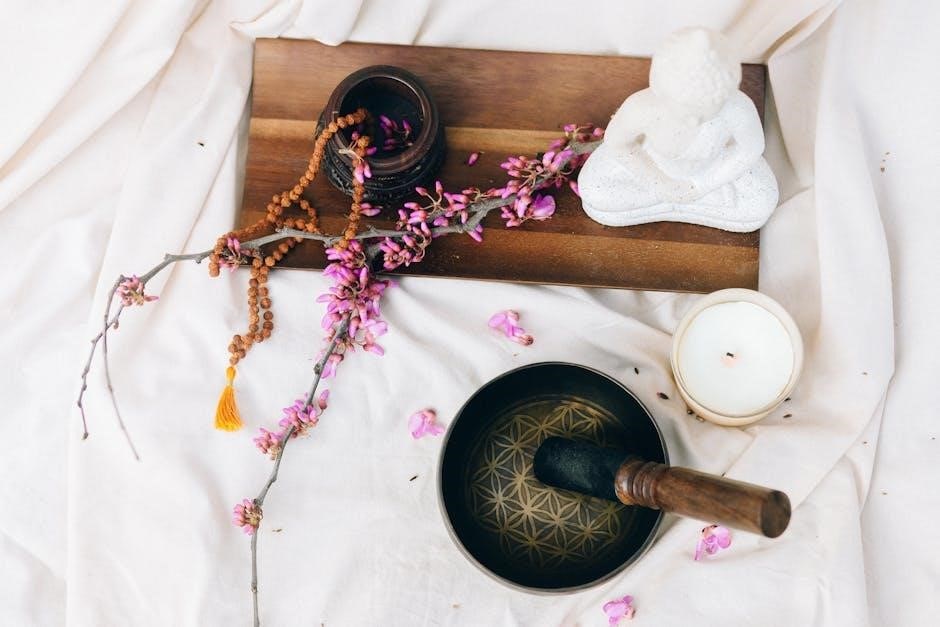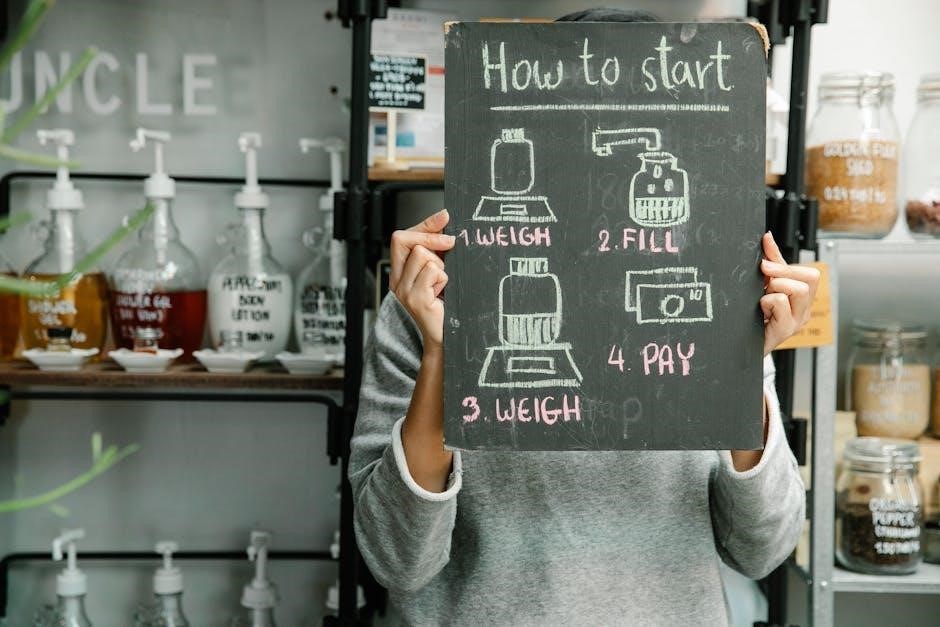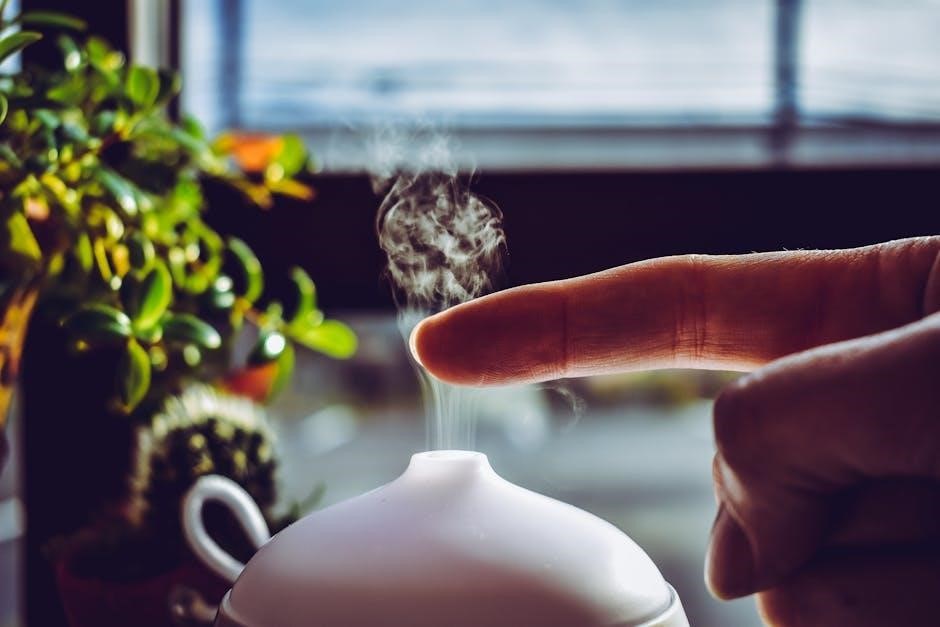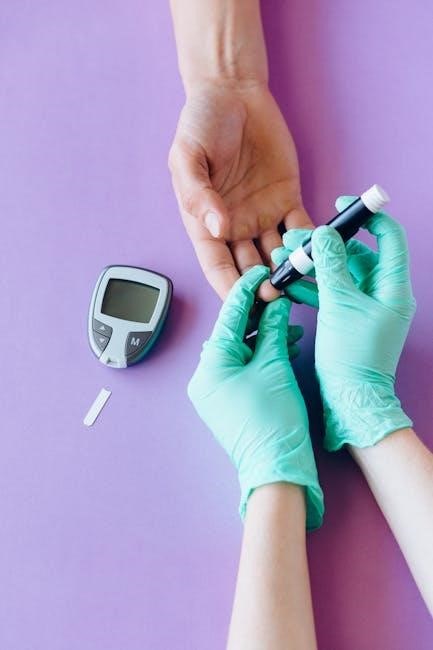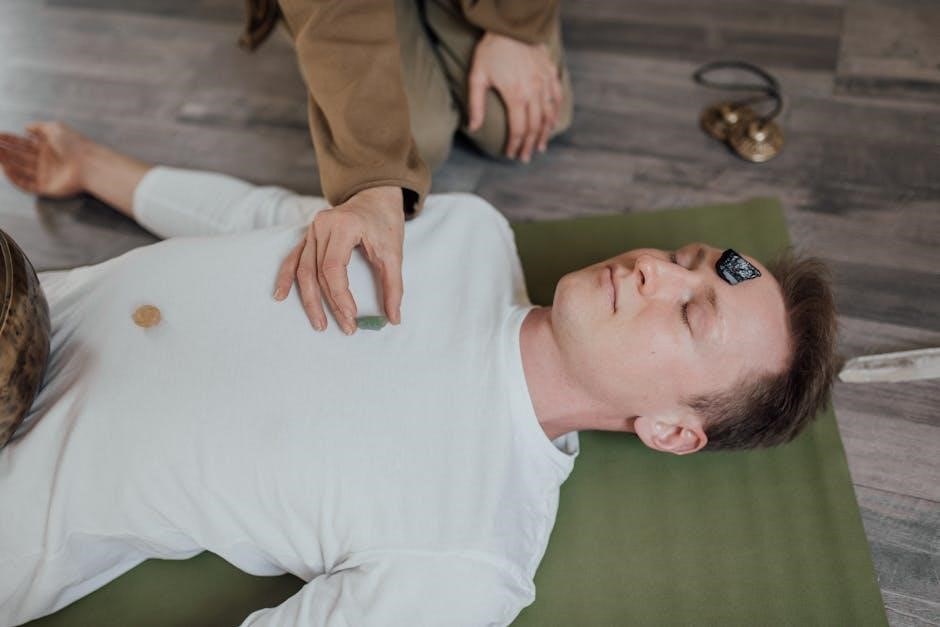Manual breathing techniques help individuals who cant sleep‚ promoting relaxation and calmness‚ using
- slow and deep breaths
to improve sleep quality and overall well-being‚ enhancing restful nights with gentle exercises.
Understanding the Importance of Sleep and Breathing Techniques
Sleep plays a crucial role in maintaining physical and mental health‚ with breathing techniques being essential for achieving a restful night’s sleep.
Using manual breathing exercises can help individuals who cant sleep‚ promoting relaxation and reducing stress.
The importance of sleep cannot be overstated‚ as it allows the body to repair and rejuvenate itself‚ while also helping to improve cognitive function and overall well-being.
Breathing techniques‚ such as deep breathing‚ can help to slow down the heart rate and calm the mind‚ making it easier to fall asleep.
Additionally‚ breathing exercises can help to reduce symptoms of anxiety and depression‚ which are often associated with sleep disorders.
By understanding the importance of sleep and breathing techniques‚ individuals can take the first step towards improving their sleep quality and overall health.
With the help of manual breathing exercises‚ individuals can learn to manage stress and anxiety‚ leading to a more restful and relaxing sleep.
This can have a significant impact on overall health and wellbeing‚ making it essential to prioritize sleep and breathing techniques.
Overall‚ the importance of sleep and breathing techniques cannot be overstated‚ and individuals who cant sleep can benefit from incorporating these exercises into their daily routine.
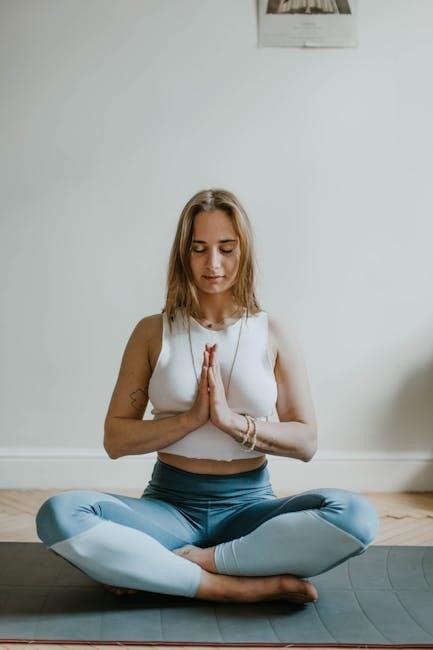
Current Treatments for Insomnia and Their Limitations
Pharmaceutical treatments have limitations‚ including habit-forming nature‚ affecting overall health‚ requiring alternative solutions‚ such as manual breathing techniques‚ to address insomnia effectively always.
Pharmaceutical Treatments and Their Habit-Forming Nature
Pharmaceutical treatments for insomnia can have a habit-forming nature‚ leading to dependence on medication‚ which can be detrimental to overall health and well-being. According to research‚ long-term use of sleep medications can lead to negative side effects‚ such as daytime drowsiness and impaired cognitive function. Additionally‚ these medications can interfere with the body’s natural sleep-wake cycle‚ making it difficult to fall asleep without them. The habit-forming nature of pharmaceutical treatments is a significant concern‚ as it can lead to a vicious cycle of dependence and withdrawal. Furthermore‚ the use of sleep medications can also lead to rebound insomnia‚ where the individual experiences increased difficulty sleeping after stopping the medication. As a result‚ it is essential to explore alternative treatments‚ such as manual breathing techniques‚ that can help alleviate insomnia symptoms without the risk of dependence or negative side effects‚ promoting a healthier and more natural approach to sleep.

Relaxation Techniques for Insomnia
Relaxation techniques‚ including meditation‚ target the brain and body‚ promoting calmness and reducing insomnia symptoms naturally every day.
Meditation and Its Effects on the Brain and Body
Meditation has a profound impact on both the brain and body‚ leading to a range of benefits that can help individuals who cant sleep. By targeting the brain‚ meditation can reduce stress and anxiety‚ promoting a sense of calmness and relaxation. This can be achieved through regular practice‚ using techniques such as mindfulness and focused attention. The effects of meditation on the body are also significant‚ with reduced blood pressure and heart rate‚ and improved immune function. Additionally‚ meditation can increase the production of neurotransmitters such as serotonin and dopamine‚ which play a crucial role in regulating mood and sleep. Overall‚ the combination of mental and physical benefits makes meditation a valuable tool for improving sleep quality and reducing insomnia symptoms. Meditation can be practiced in various forms‚ including guided meditation and mindfulness exercises‚ making it accessible to individuals with different needs and preferences. Regular meditation practice can lead to long-term benefits‚ improving overall health and well-being.
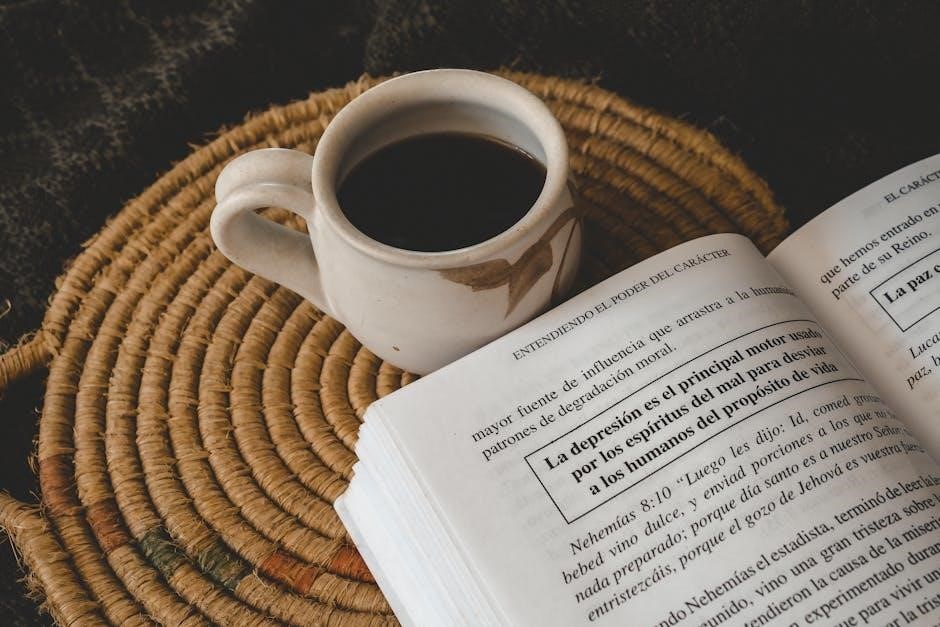
Slow and Deep Breathing Techniques for Sleep
Slow breathing techniques‚ such as 0.1 Hz frequency‚ promote relaxation‚ calmness‚ and restful sleep‚ helping individuals who cant sleep‚ using gentle and soothing methods to improve sleep quality naturally always.
Benefits of 0.1 Hz Breathing Frequency
The benefits of 0.1 Hz breathing frequency are numerous‚ including promoting relaxation‚ reducing stress and anxiety‚ and improving sleep quality. This frequency is also known to slow down the heart rate‚ lower blood pressure‚ and increase oxygenation of the body. By incorporating 0.1 Hz breathing techniques into daily routine‚ individuals can experience a significant improvement in overall well-being. The slow and deep breathing pattern helps to calm the mind and body‚ making it easier to fall asleep and stay asleep. Additionally‚ this frequency has been shown to increase the production of melatonin‚ the hormone responsible for regulating sleep-wake cycles. With regular practice‚ individuals can develop a consistent sleep schedule and wake up feeling refreshed and rejuvenated. Overall‚ the benefits of 0.1 Hz breathing frequency make it an effective technique for improving sleep quality and overall health. Regular practice can lead to a significant improvement in quality of life.
Types of Breathing Exercises for Sleep
Various breathing exercises‚ including deep belly and diaphragmatic breathing‚ help improve sleep quality and relaxation techniques for better rest.
Deep Belly Breathing‚ Diaphragmatic Breathing‚ and Hypopressive Breathing
Deep belly breathing‚ also known as diaphragmatic breathing‚ is a technique that engages the diaphragm‚ the primary muscle used for breathing‚ to promote relaxation and reduce stress; This type of breathing is characterized by the expansion of the belly‚ rather than the chest‚ and is often used in conjunction with other relaxation techniques‚ such as meditation and yoga. Hypopressive breathing‚ on the other hand‚ involves the contraction of the diaphragm and the expansion of the chest‚ and is often used to improve posture and reduce muscle tension. Both of these techniques have been shown to be effective in reducing symptoms of insomnia and improving sleep quality‚ and can be practiced in a variety of settings‚ including in bed or on a mat on the floor. By incorporating these breathing techniques into a daily routine‚ individuals can improve their overall sleep hygiene and wake up feeling more rested and refreshed; Regular practice can also lead to improved mood and reduced anxiety.
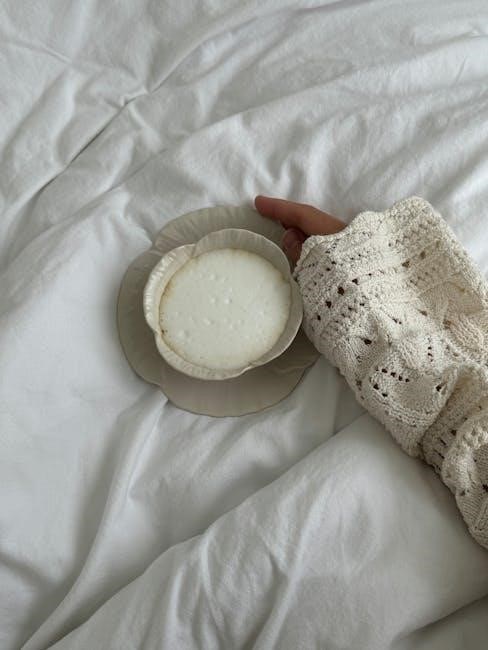
Techniques for Achieving Better Sleep
4-7-8 Breathing Technique and Its Association with Relaxation Techniques
The 4-7-8 breathing technique is a popular method for promoting relaxation and reducing stress‚ often used in conjunction with other relaxation techniques such as meditation and progressive muscle relaxation. This technique involves breathing in through the nose for a count of four‚ holding the breath for a count of seven‚ and exhaling through the mouth for a count of eight. By incorporating this technique into a daily routine‚ individuals can experience a range of benefits‚ including reduced anxiety and improved sleep quality. The association between the 4-7-8 breathing technique and relaxation techniques is well-documented‚ with many practitioners using this technique as a means of calming the mind and body. As a result‚ this technique is often recommended for individuals who struggle with sleep or relaxation‚ providing a simple yet effective means of promoting overall well-being. Regular practice can lead to improved mental and physical health.
Scientific Evidence for Breathing Techniques in Reducing Insomnia Symptoms
Research has shown that manual breathing techniques can be an effective means of reducing insomnia symptoms‚ with studies demonstrating a significant improvement in sleep quality among participants who practiced regular breathing exercises. The scientific evidence suggests that breathing techniques such as slow and deep breathing can help to calm the mind and body‚ making it easier to fall asleep and stay asleep. According to experts‚ the use of breathing techniques can be a useful adjunct to other treatments for insomnia‚ providing a non-pharmacological approach to managing sleep disorders. While more research is needed to fully understand the effects of breathing techniques on insomnia‚ the existing evidence suggests that these techniques can be a valuable tool for improving sleep quality and reducing symptoms of insomnia. Overall‚ the scientific evidence supports the use of manual breathing techniques as a means of reducing insomnia symptoms and improving overall sleep health. Regular practice can lead to improved sleep outcomes.













